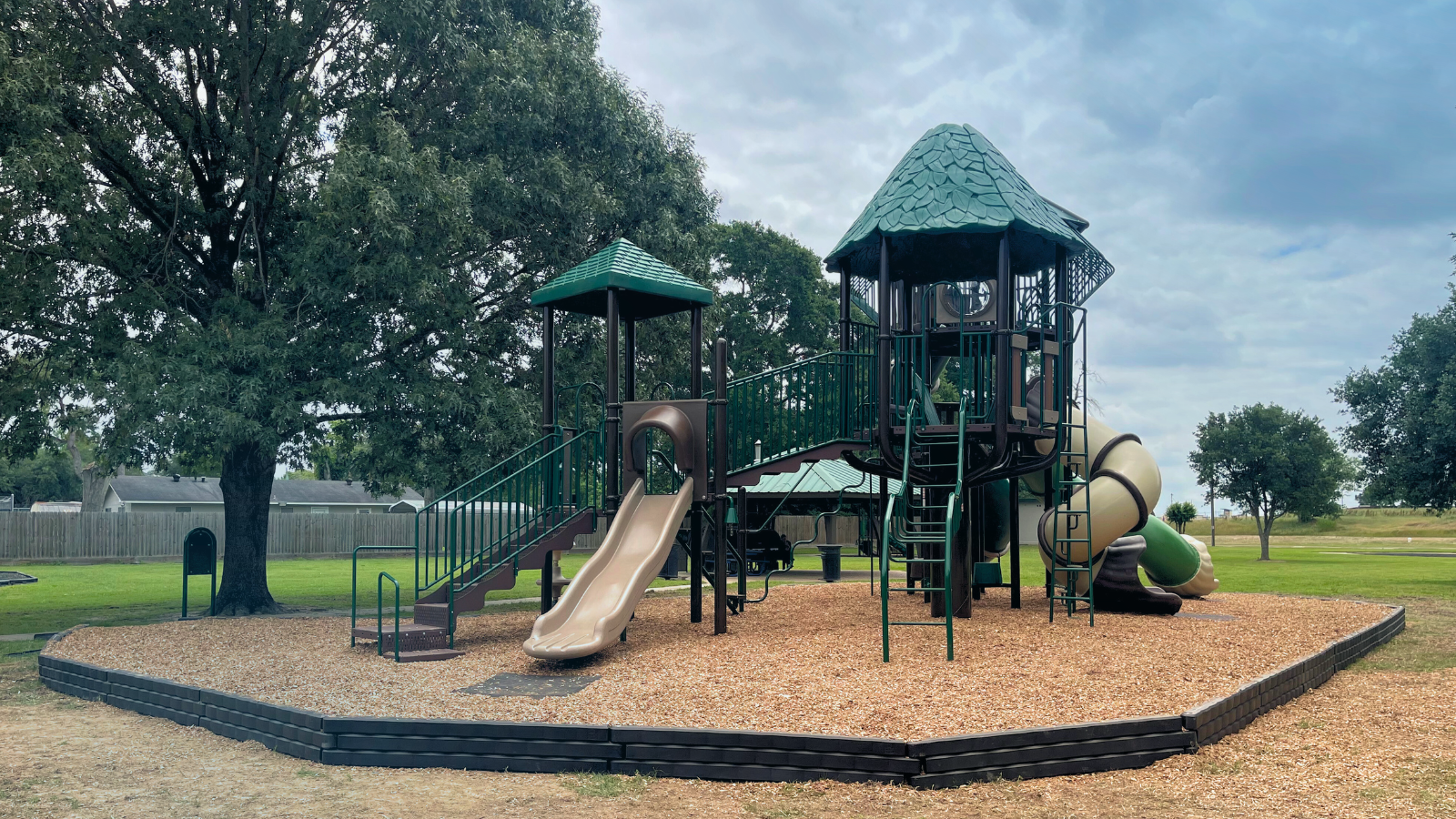Tips and Timelines for Planning Your Playground Upgrade or New Build
Posted by May Recreation Content Team on

Upgrading your existing playground or building a new playground for your community from scratch are certainly not overnight projects, but significant undertakings that take time and careful planning.
It can take anywhere from six months to more than a year from the initial concept to the grand opening for your playground upgrade or new build, but the reward of seeing children enjoy a safe, inviting, and functional play space will make the effort worthwhile.
“Designing playgrounds that are inclusive and engaging is invaluable for creating vibrant and functional public places. They benefit children of all ages by boosting the amount of physical activity kids’ receive,” says Miracle Recreation.
Playground projects can seem overwhelming without proper planning so let's look at the process, including valuable tips, and a timeline to ensure that your playground project is a success.
8 Tips for Planning Your Playground Upgrade or New Build
Before looking at a timeline for your playground project, consider these eight tips that can help you throughout the planning process:
- Prioritize safety: Always put safety first in every decision, from equipment selection to surfacing choices.
- Involve the community: Gather input from children, parents, and community members to ensure the playground meets local needs and preferences.
- Focus on inclusivity: Design with accessibility in mind to create a space that welcomes children of all abilities.
- Consider long-term maintenance: Choose durable materials and plan for ongoing maintenance to ensure the playground's longevity.
- Balance fun and development: Select equipment that not only entertains but also promotes physical, cognitive, and social development.
- Stay within budget: Carefully manage costs without compromising on quality or safety.
- Plan for the future: Consider phased approaches and future expansions in your initial design.
- Comply with regulations: Ensure your playground meets all local, state, and federal safety standards and accessibility requirements
Keeping these tips in mind throughout your playground project is a great first step. Now, let’s look at a detailed timeline that will make your playground upgrade or new build smooth and organized.
Playground Project Timeline: 7 Phases from Planning to Grand Opening
Phase 1: Initial Planning (3-6 months before project start): The foundation of a successful playground project lies in thorough initial planning. This phase typically involves several key steps:
- Assessing Your Needs and Goals: For playground upgrades, start by evaluating your existing equipment. Identify which elements are still functional and which need replacement. Consider whether the current layout meets the community's needs or if a complete redesign is necessary. For new builds, begin with a blank slate and envision the ideal playground for your community. In both cases, determine the target age groups and consider accessibility requirements to ensure the playground caters to all children.
- Establishing a Budget: Budgeting is a critical step that will influence many of your decisions throughout the project. Research potential funding sources, including grants, community fundraising, and local government allocations. For upgrades, you may be able to save costs by incorporating existing elements, while new builds might require a larger initial investment.
- Forming a Planning Committee: Assemble a diverse team of stakeholders, including parents, educators, local officials, and playground experts. This committee will help guide decision-making and ensure the project aligns with community needs and values.
- Choosing a Location: For new builds, select a site that is easily accessible, safe, and suitable for playground construction. Consider factors such as proximity to schools or residential areas, natural shade, and terrain. For upgrades, evaluate your current site. Assess whether the existing location still serves the community well or if relocation should be considered.
Phase 2: Design and Equipment Selection (2-3 months): With your initial planning complete, it's time to bring your playground vision to life. This phase typically involves several important steps:
- Working with Playground Equipment Vendors: Collaborate with experienced playground recreation and design companies such as May Recreation to explore options that fit your budget and goals
- Theme and Aesthetic Preferences: Decide on a theme or aesthetic that resonates with your community. This could range from nature-inspired designs to futuristic concepts or local cultural themes.
- Inclusive Design Elements: Ensure your playground design includes elements that are accessible and enjoyable for children of all abilities. This might include wheelchair-accessible equipment, sensory play elements, and quiet spaces for children who may feel overwhelmed.
- Selecting Appropriate Safety Surfacing: Choose surfacing materials that provide adequate fall protection and meet accessibility standards. Options include engineered wood fiber, rubber mulch, poured-in-place rubber, or synthetic turf.
Phase 3: Regulatory Compliance and Approvals (1-2 months): Ensuring your playground meets all necessary regulations is crucial for safety and legal compliance:
- Understand Local Building Codes and Regulations: Familiarize yourself with local building codes and playground safety regulations. These may dictate aspects such as equipment spacing, fencing requirements, and maximum heights for structures.
- Obtain Necessary Permits: Work with local authorities to obtain all required permits for your playground project. This process may involve submitting detailed plans and specifications for review.
- Ensure ADA Compliance: Ensure your playground design complies with the Americans with Disabilities Act (ADA) standards for accessible design. This includes providing accessible routes to play components and ensuring a percentage of ground-level play components are accessible.
Phase 4: Site Preparation (2-4 weeks): With approvals in hand, it's time to prepare your site for construction. Now your playground project starts to take physical shape:
- For Upgrades: Safely remove old equipment that will be replaced. Evaluate the existing site for any necessary repairs or improvements, such as addressing drainage issues or repairing damaged surfacing.
- For New Builds: Prepare the area, ensuring proper drainage, and contouring the land per plan. Address any site-specific challenges, such as removing unwanted rocks or tree roots.
- In both cases, this is the time to install any necessary underground utilities or electrical conduits for lighting.
Phase 5: Equipment Delivery (Typically requires around 8 weeks) and Installation (Generally takes 5-10 working days): The excitement builds as your playground starts to take shape. This phase typically lasts 8-10 weeks but stay alert for any supply chain issues that can delay projects. In this phase you will:
- Coordinate Delivery Schedules: Work closely with your equipment vendor to coordinate delivery times. Ensure you have a secure area to store equipment if it arrives before installation can begin.
- Installation Process: Professional installers will assemble and secure the playground equipment according to manufacturer specifications. For upgrades, they will also integrate new elements with any existing structures that are being retained.
- Site Inspections: During this phase, it's crucial to have regular site inspections to ensure all work is being carried out correctly and safely.
Phase 6: Finishing Touches (Timing varies): As the main structures are completed, it's time to add the final elements that will make your playground shine:
- Installing Safety Surfacing: Install your chosen safety surfacing material, ensuring it meets depth requirements for fall protection and is properly secured.
- Adding Landscaping Elements: Incorporate natural elements such as trees for shade, gardens, or rock features to enhance the playground's aesthetic and play value.
- Installing Signage and Rules: Install clear signage indicating age-appropriate areas, safety rules, and any other important information for playground users.
Phase 7: Final Inspections and Grand Opening (2-4 weeks): Before opening your playground to the public, conduct thorough safety inspections:
- Plan a Grand Opening Event: Celebrate your community's achievement with a grand opening event. This is an excellent opportunity to thank contributors, educate the community about the new playground features, and build excitement for the new space.
Keep in mind that after the grand opening your playground may be complete but there will still be work to be done such as regular maintenance, periodic safety checks, and community feedback – which will help ensure your playground remains a popular and safe space for children to play, learn, and grow.
Partnering with May Recreation to Create Your Playground
Remember, Proper planning is key to a successful playground project. By involving the community, focusing on safety and inclusivity, and carefully managing each phase of the process, you can create a playground that will serve as a valuable community asset for years to come.
Partnering with an experienced commercial-grade playground company such as May Recreation can help ensure your project’s success.
Contact May Recreation today to learn more about how we can work with you every step of the way on your playground upgrade or new build from project design with the latest computer-aided tools to financing options to professional installation.
